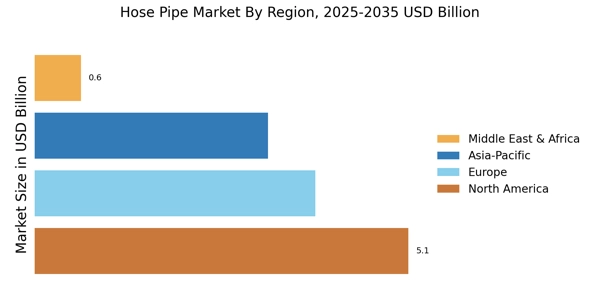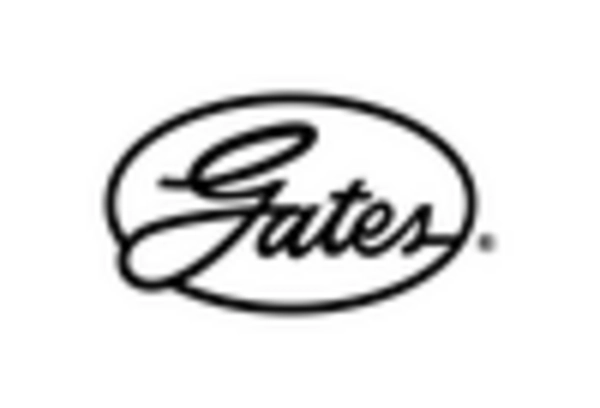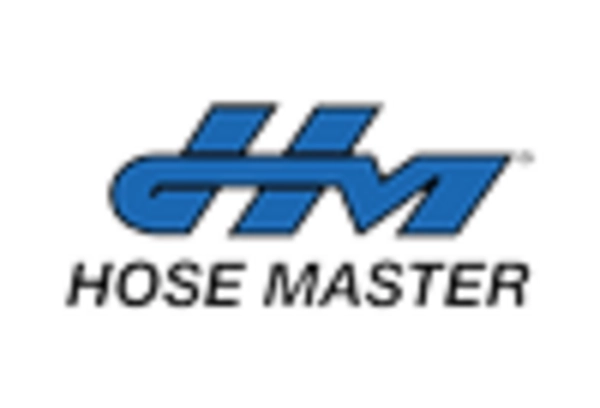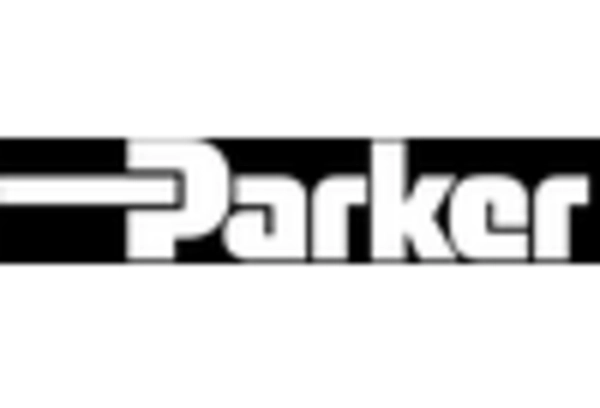Rising Agricultural Demand
The Hose Pipe Market is experiencing a notable surge in demand driven by the agricultural sector. As the need for efficient irrigation systems increases, farmers are increasingly adopting hose pipes for their versatility and ease of use. The market for agricultural hoses is projected to grow at a compound annual growth rate of approximately 5.2% over the next few years. This growth is attributed to the rising global population and the consequent need for enhanced food production. Hose pipes facilitate effective water management, which is crucial for crop yield. Furthermore, the trend towards sustainable farming practices is likely to bolster the adoption of hose pipes, as they enable targeted irrigation, reducing water wastage. Thus, the agricultural sector remains a pivotal driver for the Hose Pipe Market.
Environmental Regulations and Standards
The Hose Pipe Market is influenced by stringent environmental regulations aimed at promoting sustainable practices. Governments are increasingly implementing standards that require the use of eco-friendly materials in manufacturing hose pipes. This shift is likely to drive innovation within the industry, as manufacturers seek to comply with these regulations while maintaining product performance. The market is expected to grow by approximately 3.5% as companies adapt to these changes. Furthermore, the emphasis on reducing plastic waste and promoting recyclable materials aligns with the growing consumer preference for sustainable products. Consequently, the Hose Pipe Market is poised to benefit from these regulatory trends, fostering a more environmentally conscious approach to production.
Growing Landscaping and Gardening Trends
The Hose Pipe Market is benefiting from the rising popularity of landscaping and gardening activities. As more individuals engage in home improvement projects, the demand for high-quality hose pipes is increasing. The market is projected to grow by approximately 4.0%, driven by this trend. Homeowners are seeking efficient watering solutions for their gardens and lawns, leading to a surge in the sales of specialized hoses designed for residential use. Furthermore, the increasing awareness of environmental sustainability encourages consumers to invest in hoses that promote efficient water usage. This growing interest in landscaping and gardening not only supports the Hose Pipe Market but also fosters a culture of environmental stewardship among consumers.
Urbanization and Infrastructure Development
Urbanization is a significant driver for the Hose Pipe Market, as rapid population growth in urban areas necessitates improved infrastructure. The construction of residential and commercial buildings requires efficient water supply systems, where hose pipes play a crucial role. The market is projected to witness a growth rate of around 4.8%, fueled by ongoing infrastructure projects. Additionally, hose pipes are essential for firefighting systems, landscaping, and maintenance of public spaces. As cities expand, the demand for reliable water distribution systems increases, further propelling the Hose Pipe Market. The integration of hose pipes in urban planning and development projects indicates a robust future for this market segment.
Technological Innovations in Hose Manufacturing
Technological advancements are reshaping the Hose Pipe Market, leading to the development of high-performance hoses. Innovations such as the use of advanced polymers and composite materials enhance durability and flexibility, catering to diverse applications. The market is anticipated to expand at a rate of 4.2%, driven by these technological improvements. Manufacturers are increasingly investing in research and development to create hoses that can withstand extreme conditions, thereby broadening their applicability. Additionally, smart hose technologies that integrate sensors for monitoring water flow and pressure are emerging, appealing to both residential and commercial users. This trend towards innovation is likely to sustain the growth trajectory of the Hose Pipe Market.


















Leave a Comment